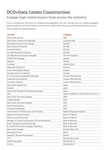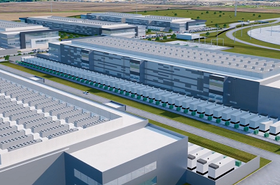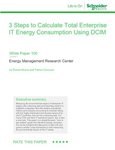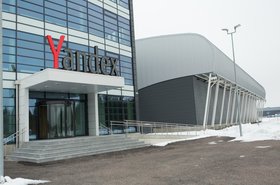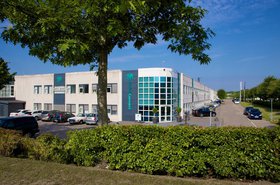The Nordic data center sector has seen significant developments in the construction and retrofitting of facilities, in line with ongoing increases in data demand.
Viewed as a potentially high-growth market, the region is becoming increasingly attractive to international investors. Supporting this, findings from a recent report by Markets and Research, Data Centre Nordics 2022 to 2026, forecast that raised floor space will increase 73 percent worldwide by 2026.
In divergence with many of their European counterparts, the Nordics’ unique climate presents opportunities for contractors to optimize efficiencies – for instance, the lower temperatures offer natural free cooling.
However, the region’s colder winter conditions also pose seasonal challenges to construction projects, which face stringent regulations and considerable non-compliance costs.
Ultimately, while the benefits of data center construction in the Nordics is clear to see, the unique weather challenges should not cloud the judgments of managers responsible for ensuring operations run smoothly.
Construction in the cold
Over the winter months, the Nordic region will see temperatures reaching up to -30°C. With this in mind, Aggreko’s data center report, Prepare for the Chill, explores the challenges of constructing data centers in the winter Nordic climate and the requisite precautions to avoid infringements to completion.
Working with technical equipment and keeping strict regulations in mind, initially minor contingencies can develop into wider disruption, posing considerable logistical and financial consequences.
The harsh winter weather can also present additional complications, with inadequate heating infrastructure a potential hazard on projects due to the natural coolant benefits of the cooler months.
The Uptime Institute even recommends some businesses factor in fines into construction contracts before work begins. However, costly delays should not become the norm and to protect contractors’ competitive edge. Instead, a comprehensive understanding of potential contingencies is essential.
The difficulty of managing environmental conditions is compounded by the responsibility of storing and maintaining valuable IT equipment as a facility is being built.
Equipment for electrical and switch rooms tends to arrive at sites early in the construction process, and these must be kept above 20°C to prevent supplier warranties from being voided.
Additionally, while humidity is fairly easy to maintain once a facility is complete, it is far more difficult to control during the construction phase. High humidity in the winter months can see cold dry air causing electrostatic charge build up inside a facility, posing danger to IT equipment reliant upon a stable airflow.
Planning & procurement
Comprehensive winter planning is required to protect projects from operational failures and their subsequent financial repercussions. However, dealing with climate complications largely remains a reactive issue.
With this in mind, before even breaking ground on new facilities, construction contractors must do what they can to prevent disruption. The ability to complete builds safely and to schedule without added expense from disruption depends on a proactive approach to harsh and volatile weather.
Contingency planning must also incorporate procuring first-rate utility provision and testing solutions which data center construction projects rely upon.
However, global supply chain constraints mean delays in procuring equipment can prevent contractors from meeting stringent schedules.
Moreover, addressing seasonal difficulties through permanent purchases is far from cost-effective, especially given the differing equipment requirements throughout the year. In light of these considerations, permanent equipment solutions are ill-suited to protect projects from construction delays and prevent unnecessary financial expenditure in the face of winter construction challenges.
Temporary equipment solutions
To support contractors, suppliers must engineer their offerings to meet stringent temperature and humidity regulations and overcome the complexities of Nordic construction projects.
Yet these must be incorporated into a dynamic equipment procurement approach, which overcome the barriers associated with purchasing permanent installations.
Temporary suppliers offer this alternative, and by supplying equipment with swifter turn-around times, such a strategy can form part of a proactive contingency strategy to mitigate the costs of disruption.
By offering hired heating and dehumidification solutions, suppliers are well-placed to support contractors in preventing disruptions that will cause financial and organizational repercussions.
Additionally, with sites facing pressure from volatile weather patterns, it is essential for contractors, supported by suppliers, to conduct load testing, particularly on electrical infrastructure.
It is important to provide an example to suppliers across the industry by offering assessments of the equipment used during data center construction.
Powering precautions
While procuring the requisite equipment is essential, access to reliable energy solutions is also crucial. Load-on-demand power solutions can replace a single constantly operating generator with two or more smaller hybrid generator systems that power up or down automatically, depending on the site’s fluctuating power usage.
Combining a battery with a generator can reduce engine running time and reduce fuel costs and emissions.
With sustainability continuing to be an important factor at all stages of a data center's lifetime, it is vital suppliers take these sorts of steps to help ensure resiliency is partnered with efficiency.
Avoiding reliance on an increasingly volatile and unpredictable grid network, battery solutions can decentralize facility energy supplies and help stabilize networks.
With renewables continuing to make up a greater proportion of the energy mix, battery surplus energy can also be stored as a ‘spinning reserve’ to be used as backup power to even out the fluctuations of intermittent supply. Battery networks also offer the potential to act as a revenue stream selling surplus electricity back to the grid through mechanisms like a demand-side response.
Tackling the issue
The low-cost renewable energy and natural cooling abilities offered by the Nordics means the region is proving itself a prudent choice for continued data center investment.
However, the harsh Scandinavian winters, with frosty temperatures and humid environments, is creating a perfect storm of challenges for construction contractors.
To weather this, comprehensive planning, supported by experienced and well-equipped suppliers is required.
By swiftly equipping contractors with advanced equipment measures and the energy solutions to power these, suppliers can do their bit to support the growth of a booming and prosperous industry.



